|
|
|
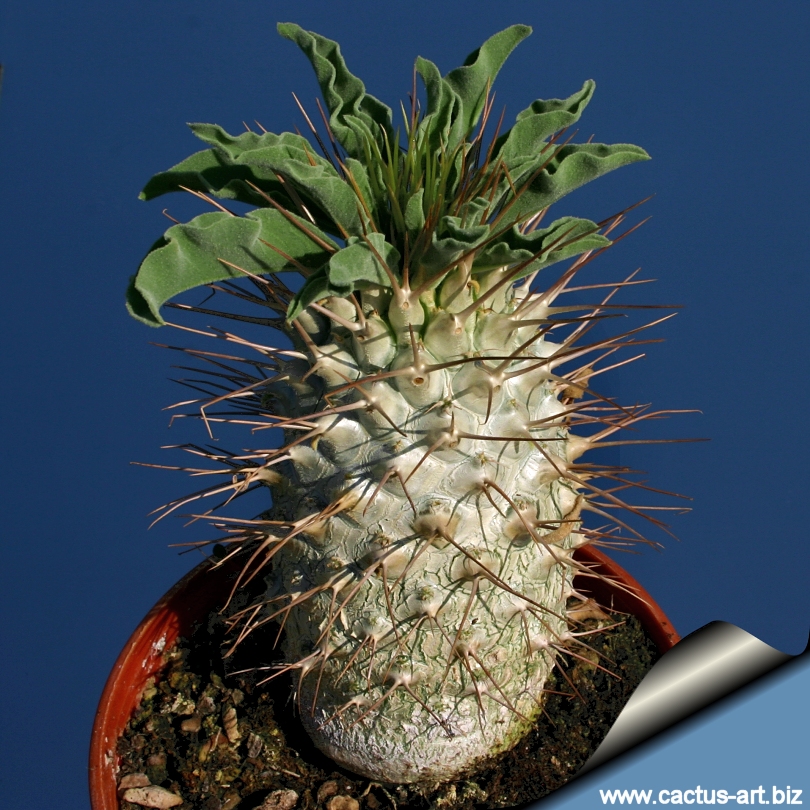
Pachypodium namaquanum must rate as one of the the most sought-after and
loveable of all large succulents which has fascinated generations upon
generations. Plants are extremely slow growing, around 0.5–1.5 cm per
year and can become a hundred years old or more.
|
Description:
Usually single-stemmed succulent plant or small tree, growing extremely
slowly. The stem will grow up to 25 centimetres in diameter and the
height may range between 1.5 and 2.5 m when fully grown; however, 4 and
5 m specimens have been observed.
Stem: It has a cylindrical trunk, that thicksets at the base and
tapering to the top that gives them an unmistakable bottle-like
appearance when mature. The stems are mostly unbranched but may
become branched from near the base or - where damaged - the trunk
produces side-branches that immediately curve back to the vertical,
while the very top of the plant is usually bent to the north, in the
same way that
Copiapoa cinerea (Cactaceae) of the Atacama Desert leans to the
north.
Spines: The stems are covered with warty tubercles (knob-like
projections on the stem), from which sharp spines protrude in a slightly
downward direction. The spines are more abundant along the top half of
the plant and decrease toward the base where tubercles are more
prominent.Leaves:
Undulate simple, obovate to oblong, green-grey and densely velvety on
both surfaces. They form a crowded rosette at the apex of the trunk
during the growing season. Leaf apexes are tapering or rounded; bases
narrowly tapering. The leaf margins are entire and very wavy which is
another distinctive characteristic of this succulent. The plants has
another flush of leaves after blooming.
Flowers: Tubular velvet-textured, ,up to 50 mm long and 10 mm
across at the mouth. They are red on the inside and yellow-green
outside, the petals have dark red tips. The Pachypodium namaquanum
generally blooms at 6 year old or older, 30 cm tall.
Blooming season: The flowers appear from July to October.
Fruit: Twin pencil-thin tapering seedpods in a V-shape
(joined at the base) up to 50 mm long. Short, soft and grey hairs
densely cover the fruit.. These are pale brown and split down one side
to release the wind-dispersed plumed seeds.
Seeds: About 4 mm long and attached to a tuft of whitish hairs
that act as parachutes. Seeds normally ripen
from September to December.
|
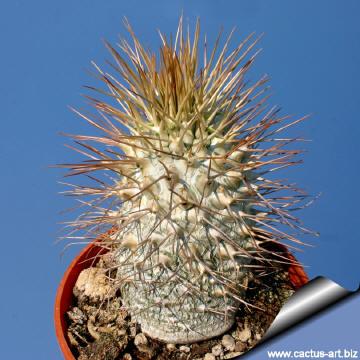 |
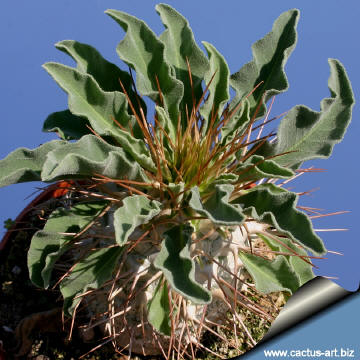 |
|
. |
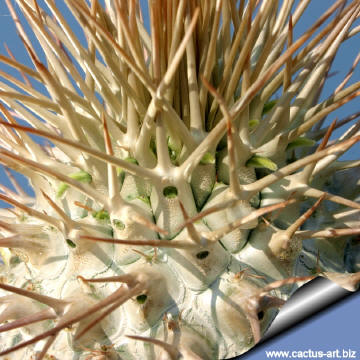 |
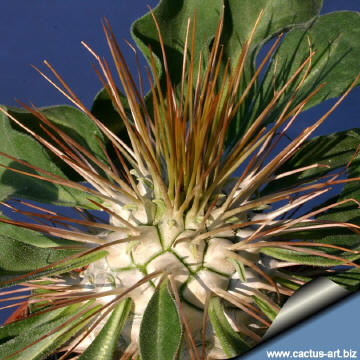 |
|
. |
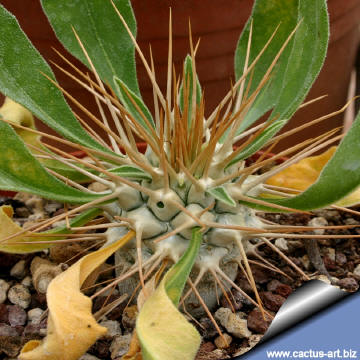 |
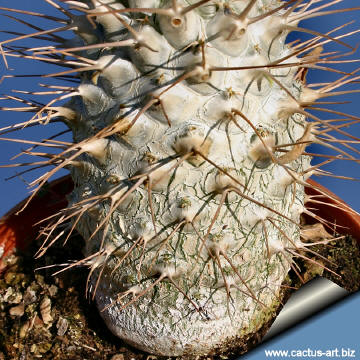 |
|
Advertising
|
|
|
|
|
Family:
Apocynaceae
(oleander or
periwinkle family)
Scientific name:
Pachypodium
namaquanum (Wyley ex Harvey) Welw.
Origin:
Richtersveld ( Northern Cape and
southern Namibia. ) in the Gariep Region or Orange River region (the
area that has the greatest variety of succulents on earth)
Habitat: Arid, rocky deserts
and mountains at altitudes from 300–900 m above sea level The climate is
harsh and the weather can be quite unpredictable. Rainfall here occurs
mainly in winter and varies from 50 to 150 mm. Extremely arid conditions
are to be found in the rain shadows of certain mountain ranges where the
rainfall may be 15mm or less. Thick fog moving inland from the Atlantic
coast can add to the precipitation. Temperatures in summer may reach
50°C. Plants seem to favour rocky and stony hill slopes that are exposed
to extreme summer conditions particularly heat and wind
Conservation status: Listed in
CITES appendix 2.
Common Names include: Elephant's
trunk ( Eng. ) - Halfmens (Afr.) - Club Foot.
Etymology: The generic name
Pachypodium is derived from the Greek word "pachys"
meaning "thick" and "podion" which means
"foot". The specific name namaquanum refers to the
"Namaqualand", a semi-arid region in the northwestern part of South
Africa.
|
|
|
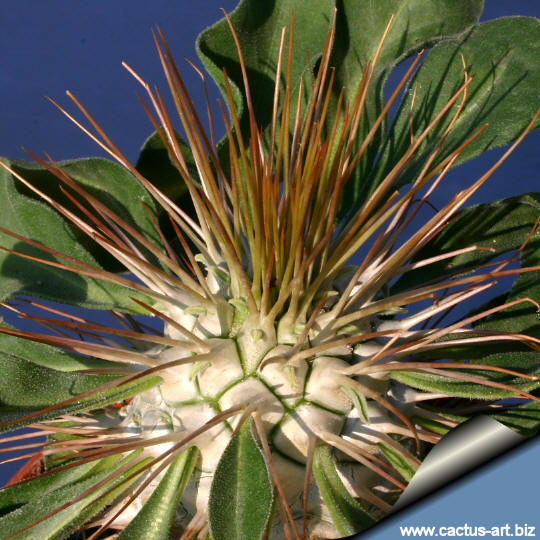
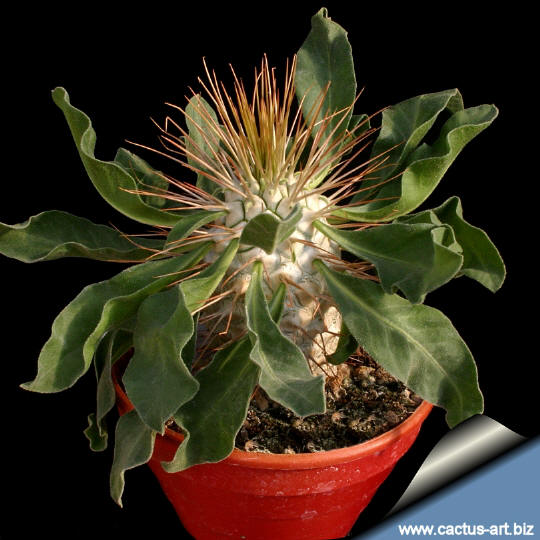
Cultivation: Pachypodium
namaquanum is a winter grower, it grows from November to April.
They seem to be rot-prone under less than ideal conditions and care.
Water sparingly and give extra well-drained soil to avoid waterlogged
conditions Give it moderate water
during this growing period, and minimum to no water the rest of the
time. Will take some light frost. Sun Exposure: Light shade to full sun.
To make them less prone to rotting, they can be grafted onto
P. gaeyi or P. lamairei. Plant grafted grow even faster and
flower easily.
Propagation: Seeds or cutting: It grows easily from seeds as long
as seeds are fresh, Seeds can be sown in the summer. After germination,
care should be taken not to overwater as this encourages rot and fungal
infestations. Keep plants well ventilated, in good light and dry plants
out in the dormant season which is summer (March to Oct).
With cuttings the success is not always guaranteed. Cuttings should be
taken in the period just before the growing season starts and the wound
is treated with a fungicide and then left to dry for at least two weeks.
Cuttings are inserted in a well drained medium. Cuttings are kept in a
hot well-lit and ventilated area and watered sparingly in the winter
months; once a week should be more than enough.
Warning:
It is known that P. namaquanum also
contains poisonous alkaloids as its sap is also used for arrow poisons.
The sap can also cause blindness when in contact with the eyes.


|
|